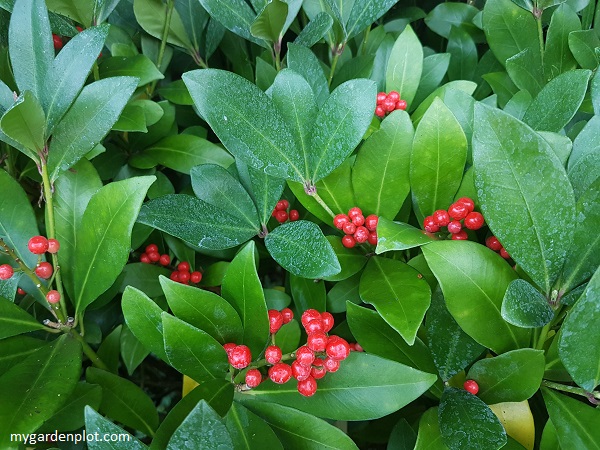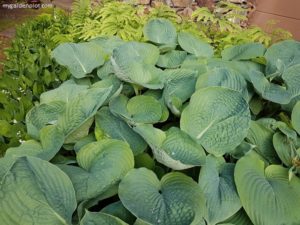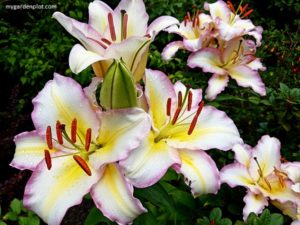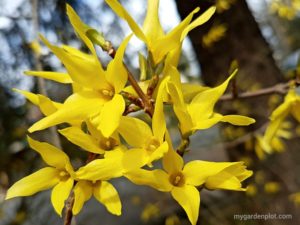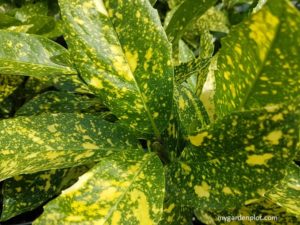About Skimmia japonica: Japanese Skimmia
Skimmia japonica (Japanese Skimmia) is valued for its compact growth habit and winter interest of red or white berries. The waxy leaves of this shade-loving evergreen shrub offer a lovely backdrop in any semi-shady garden bed. In spring, they produce clusters of small flowers that later form the berries. Bees adore the fragrant flowers. Skimmias are low maintenance, slow-growing and adaptable shrubs perfect for woodland gardens and winter gardens with year-round screening. They are also suitable for container gardening. S. japonica (Japanese Skimmia) is native to the Himalayas and East Asia. Their hardiness and reliability make them popular in the Pacific Northwest. Skimmias are also deer resistant. Follow the information below on how to care for and growing skimmias in your garden.
Female And Male Skimmia japonica (Japanese Skimmia) Plants
Skimmia japonica (Japanese Skimmia) shrubs are either female or male. Both the female and male skimmias have flowers. But only the female skimmia bears berries. The berries are not edible. The male plant is required for pollinating the female skimmia plant, which produces the beautiful berries. It is best to have one male for about five female skimmia plants in a garden. When purchasing your new skimmia shrub, check the plant tag for whether you are getting a male or female. You don’t want to end up with a hedge of male skimmia plants and no berries to show.
Skimmia japonica (Japanese Skimmia) At A Glance
Location: Partial Shade to Full Shade
Seasonal Interest: Spring Flowers / Autumn and Winter Berries
When To Prune: If Required, Trim Late Winter / Early Spring (see details below)
Size: Varies from 0.5 – 3 metres (1.5 – 10 feet) height and most will equal in spread
Zones: 6, 7, 8, 9 (see cold hardiness zone chart)
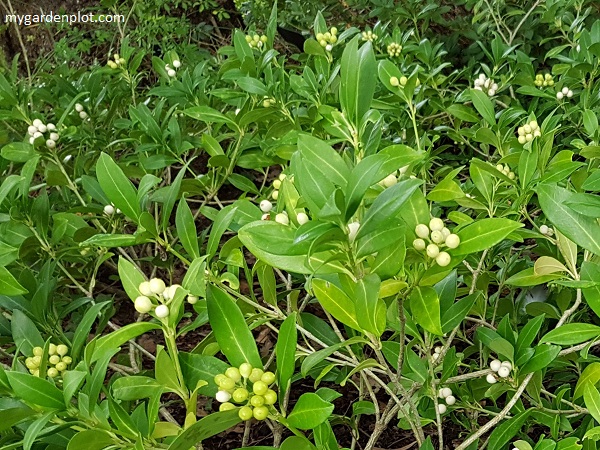
Where To Plant And How To Care For Skimmia japonica (Japanese Skimmia)
Skimmias thrive planted in well-drained, humus-rich, moist, slightly acid soil. Add bone meal when planting to help establish the young shrub. Plant in autumn or spring and water regularly. If planted in a container, ensure it does not dry out.
It is a hardy plant that tolerates some neglect. But it would benefit from an annual application of a slow-release fertilizer for acid-loving shrubs late winter or early spring.
With care, it is possible to move large skimmia shrubs. It is best to make this move in the winter time when it is dormant.
Pruning Skimmia japonica (Japanese Skimmia)
The S. japonica (Japanese Skimmia) is a low maintenance shrub that rarely needs pruning. If anything needs to be done would be mostly trimming to keep tidy. It has a natural even growth habit. Remove any awkward or dead stems late winter or early spring. As a slow-growing shrub, skimmias will be fine for many years, with only an occasional light trim. Remember, any flowering stems that are removed sacrifices berry production on the female skimmia for that season.
RELATED TOPIC: Buyer’s Guide On How To Choose Hand Pruners (Secateurs)
Pests, Diseases And Problems That Affect Skimmia japonica (Japanese Skimmia)
Skimmia shrubs are usually trouble-free. Occasionally aphids, or mites can affect it especially if the shrub is stressed by drought. The skimmia leaves can get scorched from the hot sun, so planting in the right location is essential. During frigid winters, the foliage can suffer from frost damage, or stems can disfigured with the weight of prolonged snow on it. This is especially true on the west coast where we can experience heavy, wet snow occasionally. Shaking excess heavy snow off the skimmia can help it retain it’s shape and prevent bent stems.

